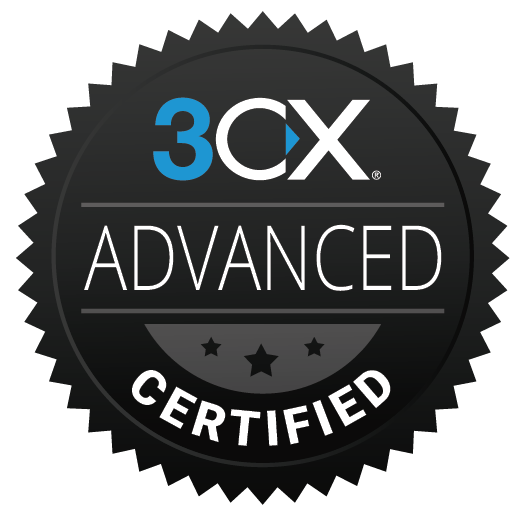The security of your business’s sensitive data and operations is non-negotiable. Imagine a digital shield that allows only trusted individuals to access critical systems, preventing unauthorized breaches. Whether you’re a proactive business owner, a curious developer, or an IT enthusiast, delving into Access Control unveils the art of digital lock and key. Uncover the potential to enhance your business’s security measures and take charge in an interconnected world.
As organizations, like yours, store valuable data, sensitive information, and expensive assets, protecting these resources becomes paramount. Access control emerges as a crucial strategy in safeguarding businesses against unauthorized access, and potential threats. In this blog, we will explore what access control entails, its various components, and why it is a critical necessity for business owners in today’s complex and interconnected world.
Understanding Access Control
At the heart of every digital fortress lies Access Control – a strategic sentry that determines who gains entry to your technological kingdom. Think of it as a sophisticated bouncer at an exclusive club, selectively permitting only authorized users through the velvet rope while turning away potential troublemakers. Access Control is your business’s master key, allowing you to customize permissions and restrictions for individuals, ensuring they interact with your digital domain on your terms. By grasping this intricate art of permission, you unlock the potential to thwart cyber threats, safeguard sensitive data, and orchestrate a symphony of secure operations. So, whether you’re safeguarding trade secrets, confidential customer data, or simply your digital sanctuary, mastering Access Control is your passport to total technological control.
Components of Access Control
Peering behind the digital curtain, you’ll uncover the nuanced components that orchestrate the symphony of Access Control. Imagine a finely tuned ensemble, each instrument playing a unique role to create a harmonious whole. Access Control, too, is a composition of distinct components working in concert to ensure digital harmony and security. From the gatekeeping of authentication methods to the meticulous assignment of user roles and permissions, these components form the backbone of your digital defense. Whether you’re an IT professional sculpting the contours of network security or a business owner safeguarding proprietary insights, delving into these components unravels the mechanics of Access Control and empowers you to compose a secure digital masterpiece.
The key components include:
Identification: This is the initial step in the access control process, where individuals provide unique credentials to identify themselves. Credentials can be in the form of access cards, key fobs, biometric data (fingerprint, iris, etc.), PIN codes, or username-password combinations.
Authentication: Once identification is established, the system verifies the credentials to confirm the person’s identity. Authentication methods include single-factor (e.g., password-only) or multi-factor (e.g., combination of password and fingerprint) authentication.
Authorization: After successful authentication, the system determines the level of access granted to the individual based on their role, position, or security clearance. Authorization can be either granular or broad, depending on the organization’s needs.
Access Management: Access management involves the ongoing monitoring and administration of access rights, including adding or removing users, adjusting permissions, and generating access reports.
Physical Barriers: In physical access control, barriers such as doors, gates, turnstiles, or security guards prevent unauthorized entry.
Encryption: For digital access control, encryption plays a vital role in securing data during transmission and storage.
Why Access Control is Critical for Business Owners
Protection of Sensitive Information: Businesses handle a wealth of sensitive information, including financial data, customer records, intellectual property, and trade secrets. Access control ensures that only authorized personnel can access this critical information, reducing the risk of data breaches, corporate espionage, and fraud.
Prevention of Unauthorized Access: Unauthorized access can lead to data theft, vandalism, or sabotage. By implementing access control measures, business owners can effectively mitigate the risk of internal and external threats, safeguarding their assets and reputation.
Compliance with Regulations: Many industries are subject to strict data protection regulations, such as GDPR, HIPAA, or PCI DSS. Failure to comply with these regulations can result in severe penalties. Access control helps businesses maintain compliance by controlling access to sensitive data and ensuring audit trails for access events.
Employee Safety: Physical access control is equally important for ensuring the safety of employees within the premises. By limiting access to certain areas, business owners can prevent unauthorized individuals from entering potentially hazardous zones.
Remote Access Management: In the era of remote work, access control takes on added significance. Business owners can use access control systems to manage remote access to company networks, applications, and resources, ensuring secure connectivity from any location.
Loss Prevention: Access control can significantly contribute to loss prevention in retail environments. By restricting access to stockrooms, storage areas, and valuable merchandise, businesses can reduce the risk of theft and shrinkage.
Incident Investigation: Access control systems generate detailed access logs, allowing business owners to trace events and identify anomalies. In case of security incidents or breaches, these logs become invaluable for investigation and forensics.
Types of Access Control Systems
There are various types of access control systems, each tailored to suit specific business needs. Some common types pf access control systems include:
AC (Discretionary Access Control):
Picture your digital realm as a canvas, and with DAC, you’re the sole artist wielding the brush. In this system, the “discretion” is yours to bestow, as you determine who can access your creations. You hold the power to grant or restrict access to your files and resources, akin to how you might choose who gets to enter your personal space. It’s like having the final say on who’s invited to your art gallery. This approach is common in small businesses or personal computer settings.
MAC (Mandatory Access Control):
Enter the world of MAC, where access is akin to a strict hierarchy. Think of it as a classified clearance system, where information is labeled with different levels of sensitivity, and only those with the corresponding clearance can interact with it. It’s as if each piece of data wears a badge, and users can only engage if their badge matches the data’s rank. This rigid system ensures that classified information remains within the right circles.
RBAC (Role-Based Access Control):
Imagine your digital kingdom with roles assigned like characters in a play. In RBAC, individuals are cast into roles, each with its own set of permissions and responsibilities. Just as actors play their parts onstage, users perform their roles within the digital landscape. So, whether you’re a leading protagonist or a supporting character, your actions are determined by your designated role, allowing the play to unfold smoothly. This approach simplifies access management in large organizations.
ABAC (Attribute-Based Access Control):
Visualize your digital playground as a realm where attributes are the keys to the kingdom. In ABAC, access hinges on attributes—traits, qualities, or metadata—associated with both users and resources. These attributes act like magical keys, unlocking access only when the right combination aligns. It’s as if each digital door requires specific attributes to swing open, making it a flexible and adaptable access control approach.
Implementing Access Control: Best Practices for Business Owners
To effectively implement access control, business owners should consider the following best practices:
Conduct a Comprehensive Risk Assessment: Start by understanding your business’s unique security risks and requirements. Identify valuable assets, sensitive data, and critical systems. This assessment will help you tailor your access control strategy to address specific vulnerabilities.
Define Clear Access Policies: Develop clear and well-defined access policies that outline who can access what resources and under what circumstances. These policies should align with your business goals, compliance requirements, and the principle of least privilege (giving users the minimum access necessary to perform their tasks).
Implement a Least Privilege Principle: Embrace the principle of least privilege, granting users only the permissions they need to perform their roles effectively. Avoid the common practice of granting overly broad access, as this can increase the risk of unauthorized access and data breaches.
Choose Appropriate Access Control Models: Depending on your business’s complexity and security needs, consider implementing the right access control model(s) that align with your operations. This might involve combining different models like RBAC, ABAC, and DAC to create a tailored approach.
Regularly Review and Update Permissions: As your business evolves, user roles change, and new resources are added, it’s crucial to regularly review and update access permissions. Remove access for users who no longer require it and ensure that new resources are properly protected.
Implement Multi-Factor Authentication (MFA): Enhance security by implementing MFA, requiring users to provide multiple forms of verification before gaining access. This adds an extra layer of protection against unauthorized access, even if passwords are compromised.
Monitor and Audit Access: Implement a robust monitoring and auditing system to track user activities and access attempts. Regularly review logs to identify anomalies and potential security breaches, enabling you to take immediate action.
Provide Security Awareness Training: Educate your employees about the importance of access control and cybersecurity. Train them on best practices, password hygiene, recognizing phishing attempts, and reporting suspicious activities.
Regularly Update and Patch Systems: Keep your systems, applications, and software up to date with the latest security patches. Vulnerabilities in outdated software can be exploited by attackers to gain unauthorized access.
Have a Response Plan: Despite your best efforts, breaches can still occur. Develop a comprehensive incident response plan outlining steps to take in the event of a security breach. This plan should include communication strategies, containment measures, and ways to minimize damage.
Engage Security Professionals: Consider seeking guidance from cybersecurity experts or consultants. They can help you assess your current security posture, recommend improvements, and ensure that your access control measures are robust and up to date.
By implementing these best practices, business owners can create a secure digital environment where access is controlled, risks are minimized, and sensitive data is safeguarded from potential threats.
Don’t let your business’s security be an afterthought – it’s time to take the reins and ensure your digital assets are well-guarded. With the intricacies of access control at your fingertips, you have the power to dictate who enters your digital domain and safeguard your operations like never before. But remember, you don’t have to navigate this journey alone. At ComRes, we’re more than just tech experts – we’re your partners in creating a robust, tailored access control strategy that fits seamlessly into your business’s unique landscape. Our dedicated team is ready to guide you through the process, from risk assessment to policy implementation, ensuring you enjoy the peace of mind that comes with a fortified digital fortress.
Contact us today to turn your access control aspirations into a reality.
Your business’s security deserves nothing less.
Call us today at 954-462-9600 or fill out our online form for more information.








